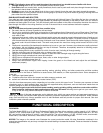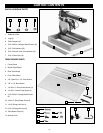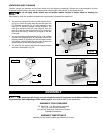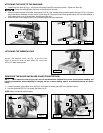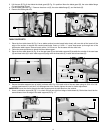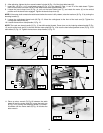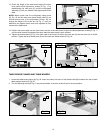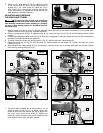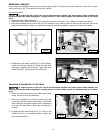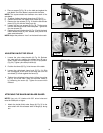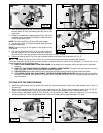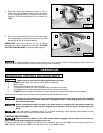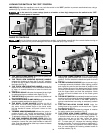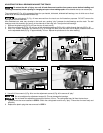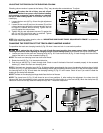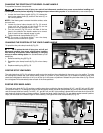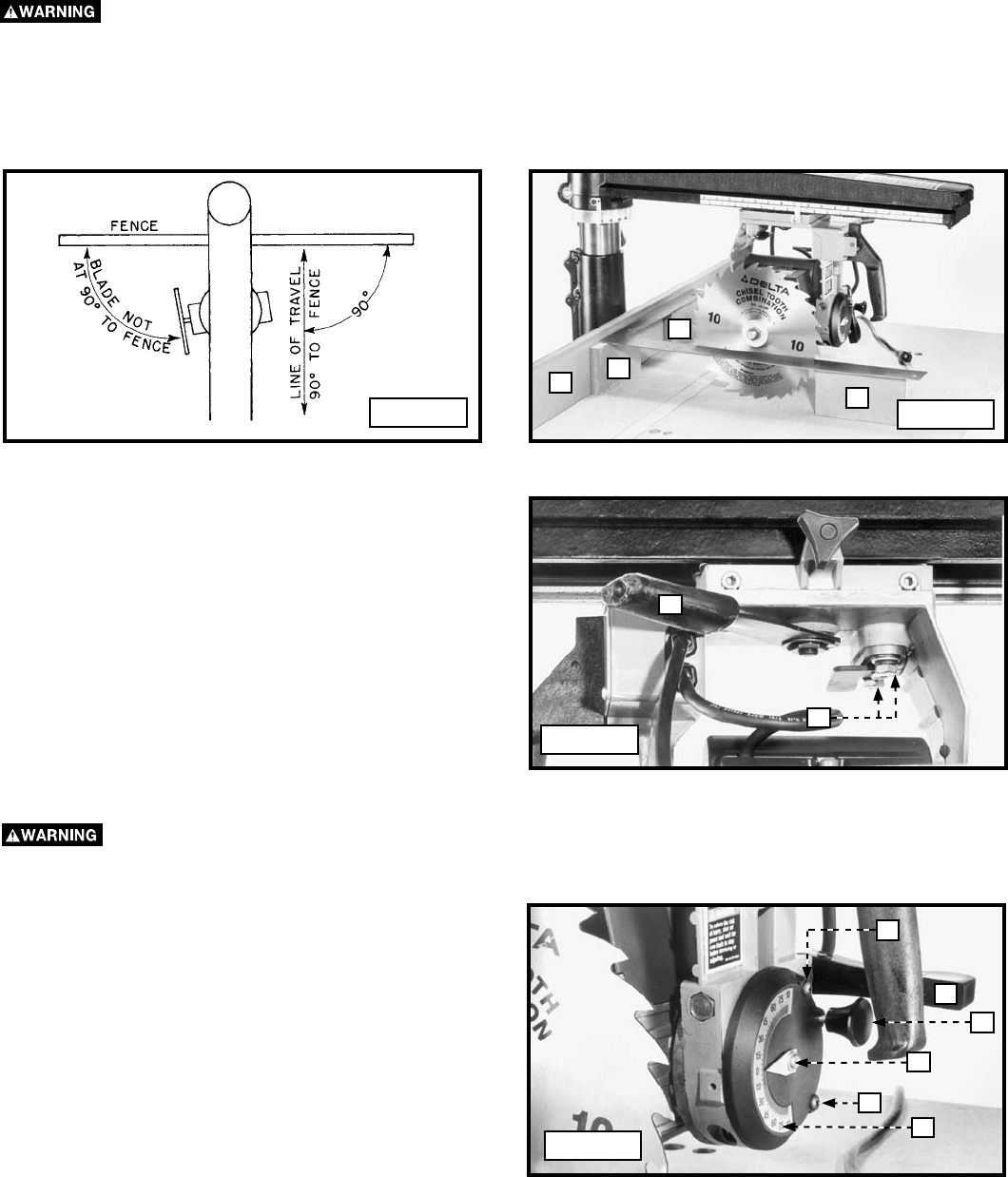
15
REMOVING “HEELING”
4. Release the yoke clamp handle (C) Fig. 30 and slightly
loosen the two hex screws (D). Swivel the yoke until
the blade is parallel with the square. Tighten the yoke
clamp handle (C). Tighten the two hex screws (D).
SQUARING THE SAWBLADE TO THE TABLE
1. Attach the inner blade flange, saw blade, outer blade
flange, and arbor nut on the saw arbor.
2. Place the cuttinghead in a cross-cut position (Fig. 29).
Lower the track arm until the saw blade is clear of the
table. Slide the cuttinghead forward until it is positioned
over the front table board. Clamp the cuttinghead in
position.
3. Engage the bevel index knob (A) Fig. 31. Check to see
that the motor is in a horizontal position. Tighten the
bevel clamp handle (C).
Even though the cuttinghead travel may be perfectly aligned at 90° to the fence, the blade itself may not be 90° or square
with the fence (Fig. 28). This condition is known as “heeling.”
To check and adjust:
1. Install saw blade without the guard.
2. Replace the fence with a flat piece of 3/4" wood (A) Fig. 29 that is at least 5" high. Tighten the table board clamps.
3. Place three identical pieces of wood (B) Fig. 29 on the table. Lay a framing square on them so that the short arm is flush
against the fence and the long arm is against the blade. Be sure that the square is between the teeth of the blade.
Fig. 28
A
Fig. 29
Fig. 30
B
B
B
C
D
Fig. 31
F
C
A
E
F
B
To reduce the risk of injury, turn unit off and disconnect machine from power source before installing and
removing accessories, before adjusting or changing set-ups or when making repairs. An accidental start-up can cause
injury.
To reduce the risk of injury, turn unit off and disconnect machine from power source before installing and
removing accessories, before adjusting or changing set-ups or when making repairs. An accidental start-up can cause
injury.



